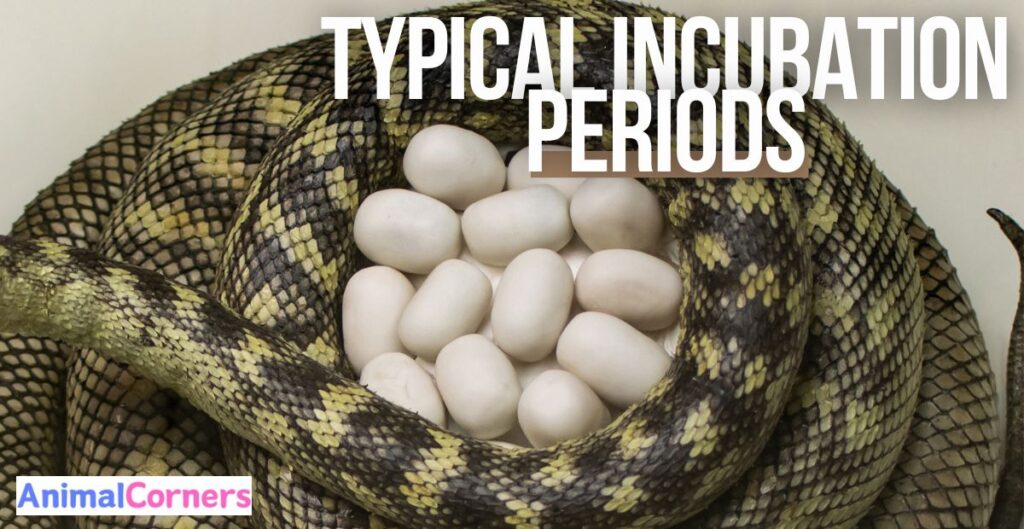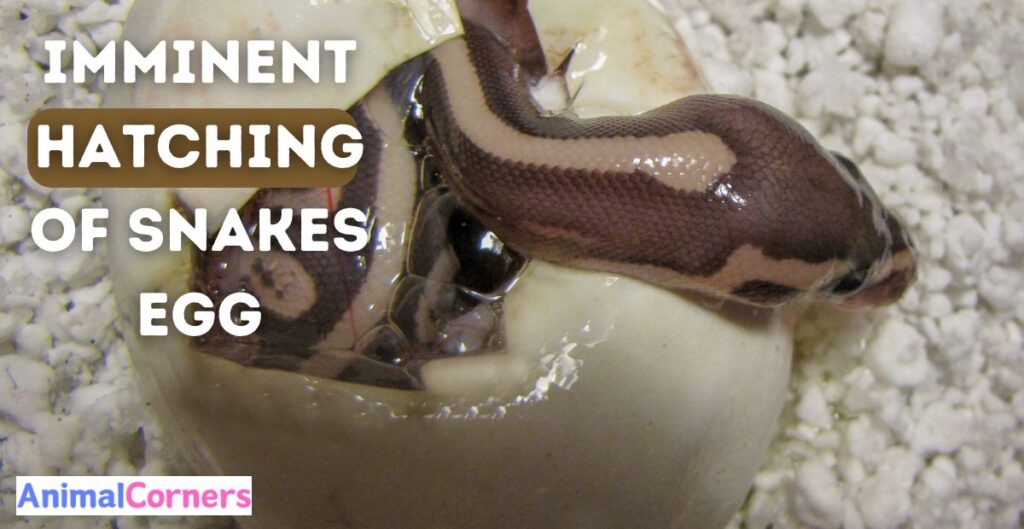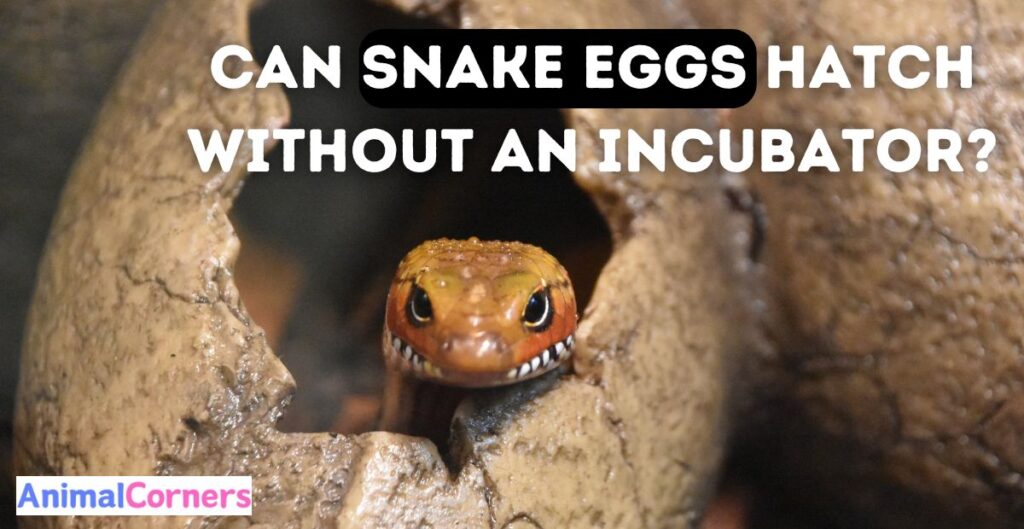How Long Does It Take for Snake Eggs to Hatch

Snakes reproduce by laying eggs, just like a lot of other reptiles do. To protect them from predators and the outdoors, these eggs are frequently placed in secure locations like concealed leaf litter or subterranean tunnels. It’s interesting to note that certain snake species are also ovoviviparous, which means the mother gives birth to live offspring after the eggs hatch inside her body.
It’s important to comprehend how long snake eggs take to hatch for a number of reasons. It aids in the planning and provision of ideal conditions needed for the effective development of the eggs by snake breeders.
Understanding the incubation time aids in the conservation of endangered snake species by ensuring that their eggs are properly cared for.
In this post we will learn in detail about “How Long Does It Take for Snake Eggs to Hatch“
Typical Incubation Periods

Shorter Incubation Period Species
Some snake species require between 40 and 60 days to fully incubate. The Corn Snake is one such species; its eggs usually hatch in 50–60 days on average. Another illustration is the kingsnake, whose eggs often take 40 to 60 days to develop.
The development of the embryos inside the eggs is accelerated in these species, which frequently flourish in warmer regions.
Moderate Incubation Period Species
Some snakes have a moderate incubation period, meaning that it takes their eggs between sixty and ninety days to hatch. A excellent example is the Burmese python, which takes about 60 to 70 days to incubate.
Also, the Ball Python’s eggs usually hatch within about 55 to 62 days but can sometimes take up to 70 days. These species generally lay their eggs in well-protected and humid environments to ensure proper development.
Longer Incubation Period Species
There are species with longer incubation periods, often taking 90 to 120 days or even more for the eggs to hatch. One such species is the Green Tree Python, where the incubation period can extend up to 90 days or longer.
Another example is the Reticulated Python, whose eggs may take about 85 to 90 days, sometimes extending to 100 days under certain conditions.
These species often require specific temperature and humidity levels to ensure the successful development of the embryos.
Stages of Development Inside the Egg

Initial Stage: Embryonic Development Within the Early Days
The embryo begins to grow at the first stage as soon as the egg is deposited. At this point, the fertilized cell starts to divide and develop into a little snake.
The yolk provides the embryo with nutrients that aid in growth and the formation of the fundamental body structure.
You wouldn’t be able to see many details at this point, but the framework for all the vital organs and systems is being established.
Mid-Development: Formation of Key Anatomical Features
The snake’s fundamental shape starts to show more clearly in the mid-development stage. At this point, the formation of the heart, lungs, and brain starts.
The tiny snake inside the egg also starts to develop its scales and patterns that will become more defined as it grows. The embryo continues to derive nutrients from the yolk, and its movements may start to become slightly more noticeable.
Final Stage: Preparation for Hatching and Behaviors Observed
The final stage is all about the embryo getting ready to hatch. At this point, the snake is almost fully formed but continues to grow and strengthen. The snake may move around more as it prepares to break through the eggshell.
Its lungs and muscles are nearly fully developed, and it starts to exhibit hatching behaviors, such as shifting and wriggling, to position itself for breaking out of the egg. Once the snake is strong enough, it will use a special egg tooth to crack open the shell and emerge into the world.
Also Read: Why Do Snakes Turn Upside Down When They Die?
Signs of Imminent Hatching of Snakes Egg

Changes in Egg Appearance
One of the key signs that snake eggs are about to hatch is a change in their appearance. You might notice that the eggs become dimpled or start to collapse slightly.
This dimpling is a good indication that the snake embryos inside are getting ready to hatch. The eggshells may also appear softer or more pliable than before.
Behavioral Signs
You can also observe behavioral signs as the embryos become more active inside the eggs. You might see or feel movement if you gently handle the eggs.
The baby snakes inside will start to wriggle and shift around more frequently as they position themselves for hatching. These movements are a clear sign that the hatching process is about to begin.
Environmental Cues
The environment is another important component that initiates hatching. The embryos may get a signal to hatch when the temperature or humidity changes.
For instance, a small rise in temperature or a particular humidity level can stimulate the embryos to begin emerging from their shells. The timing of the newborn snakes’ hatching is aided by these outside cues, which help assure their survival.
Can Snake Eggs Hatch Without an Incubator?

Without an incubator, snake eggs can indeed hatch, but it will need to be as close to the natural environment as feasible. In the wild, snakes frequently lay their eggs in areas that are safe from predators, have the ideal humidity and temperature, and are also shielded from the elements.
In order to effectively hatch snake eggs without the use of an incubator, the same conditions must be created. The eggs can be positioned in a warm, damp substrate, like sphagnum moss or vermiculite, to achieve this.
It’s critical to maintain the temperature between that of the particular snake species, which is normally between 78 and 84°F (25 and 29°C).
It’s also crucial to maintain the proper humidity levels to prevent the eggs from drying out. You can hatch snake eggs without an incubator by properly controlling these circumstances.
FAQs
Do snake eggs need to be kept warm?
Yes, keeping snake eggs warm is essential to their proper growth. Each species has a preferred temperature range, which is normally between 78 and 84°F (25 and 29°C). A successful hatching process and healthy embryo growth are facilitated by optimal temperature.
How long after mating do snakes lay eggs?
While it varies throughout snake species, the interval between mating and egg-laying often lasts a few weeks to a few months. The exact timing can vary depending on the species, the environment, and the health of the individual snake, but for many species, females will lay eggs 4 to 8 weeks after mating.
What is the typical incubation temperature for snake eggs?
Depending on the species, the optimal incubation temperature for snake eggs is typically between 78 and 84°F (25 and 29°C). Ensuring that the temperature stays within this range is crucial for the embryos’ proper development.
How can I tell if a snake egg is viable?
A fertile snake egg usually has a firm texture and exhibits no mildew, staining, or dents. By shining a light into the egg, a process known as candling, it is also possible to see blood vessels and an embryo, both of which are signs of viability.
Can I handle snake eggs during the incubation period?
Minimal handling is necessary to prevent straining the developing embryos. Gently handle the eggs only when conditions like mold eradication or supervision are necessary.
What should I do if I notice mold growing on a snake egg?
If mold appears, remove the impacted egg carefully and wash it with a mild solution of water and a tiny bit of antifungal medication. To stop mold from growing further, keep the temperature and humidity at their ideal levels.
Do all snake species have the same incubation period?
No, different snake species have varied incubation times. For instance, the eggs of the Green Tree Python and Reticulated Python may hatch in 90–120 days or more, whereas the eggs of the Corn Snake and Kingsnake may hatch in 40–60 days.
Final Remarks
To sum up, understanding the incubation period of snake eggs involves several key points. Firstly, incubation periods can vary greatly among different snake species—from around 40 to 60 days for species like the Corn Snake and Kingsnake to longer periods of 90 to 120 days for species like the Green Tree Python and Reticulated Python.
Starting with the basic construction of the embryo, the development of vital organs and traits, and lastly the preparation for hatching, are the phases of development that take place inside the egg.
Changes in the eggs’ appearance, more movement inside the eggs, and signs from the environment—such as humidity and temperature—all indicate that hatching is almost certain. Finally, even though snake eggs can hatch without an incubator, successful hatching depends on carefully simulating natural conditions.




